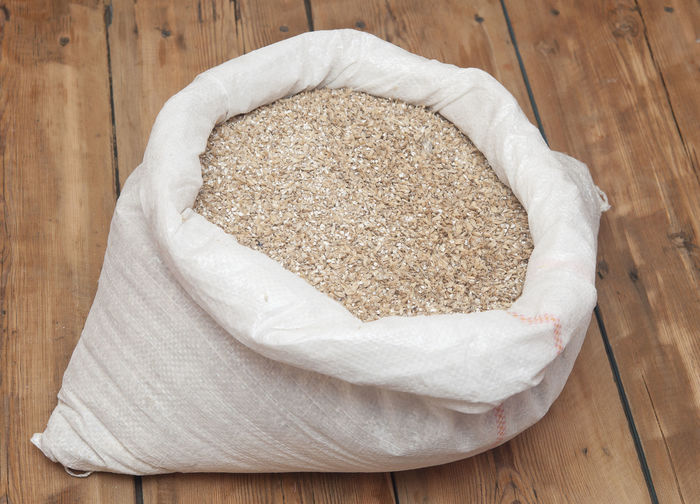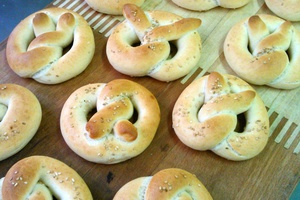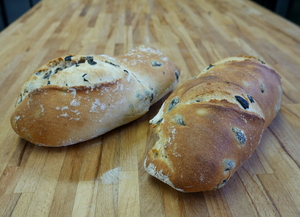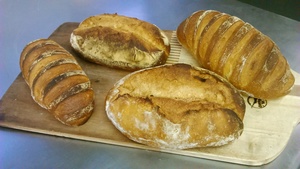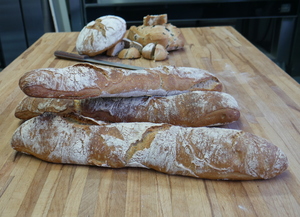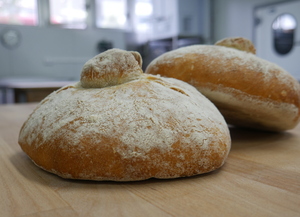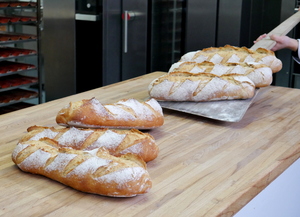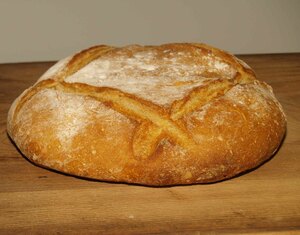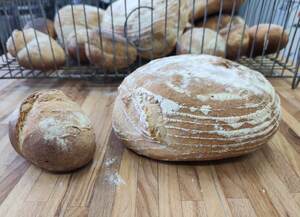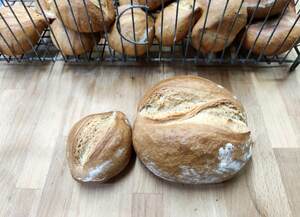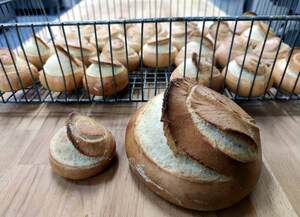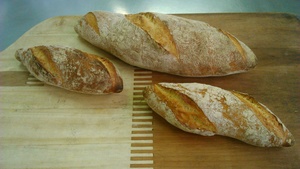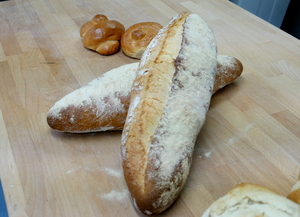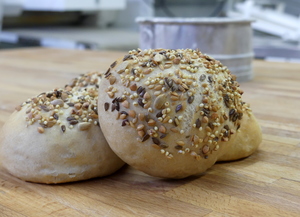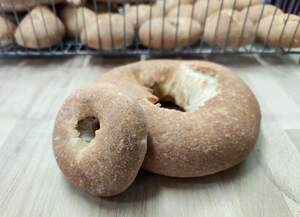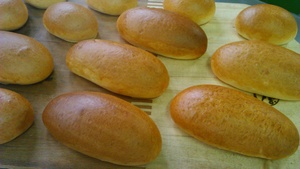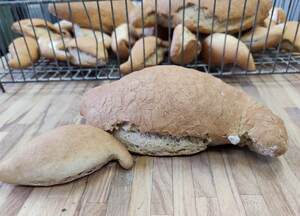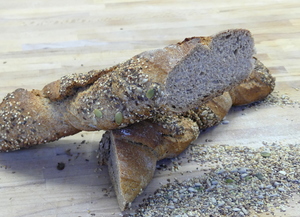Malted brown flour
Malt brown flour is just malted barley, crushed without its shell. It has a high content of the alpha-amylase. Malt flour increases the diastatic activity of wheat flour. This activity generates fermentable sugars from starch, like foods that contain yeast. Amylase usually softens the dough, making it easier to work with. Malt gives bread an aromatic taste. Diastatic malt is added on a level of 0’5 and 1% of flour, while non diastatic malt (heated to remove enzymes) can be added to a 3-5% of flour, mainly to give it more taste.
Malt flour for bread baking results from a natural process that develops the best attributes for bread.
Nutritional information (0.1 kg)
Energy
375.0
kcal
Carbohydrates
80.0
g
Proteins
9.3
g
Lipids
1.2
g
Sugars
0.0
g
Salt (Sodium)
0.0
mg
Folic acid
22.0
ug
Vitamin C
0.0
g
Vitamin A
0.0
ug
Zinc
0.8
mg
Iron
1.1
mg
Calcium
15.0
mg
Cholesterol
0.0
mg
Polyunsaturated fatty acids
0.51
g
Monounsaturated fatty acids
0.13
g
Saturates
0.16
g
Fiber
3.4
g
The data is merely a guide and should not be used for medical purposes. Those responsible for the web disclaims any responsibility.
-
Type of dish
- Beers
- Cocktails
- Breakfasts and brunch
- Burguers
- Juices, milkshakes and beverages
- Shellfish
- Bread and pastries
- Pizzas, patty
- Dessert
- Pasta
- Sándwich
- Pastries
- Finger foods
- Ice creams and sorbets
- Legumes
- Salads
- Eggs
- Patty
- liqueur
- Harvard plate
- Main course
- Meats
- Fish
- Birds
- Vegetables
- Soups and creams
- Rices
- Coffee, chocolate and infusion
- Cheeses
- Appetizers and canapes
- Temperature
- Cuisine type
- Additional culinary preparation
- Conservation technique
- Seasonal recipes
-
- Aromatic herbs
- Beverages
- Big game hunt
- Bread and pastries
- Canned goods and pickles
- Cereals
- Condiments, spices and additives
- Cooked, salted, preserved and cold meats
- Dried fruits and nuts
- Dry pulses
- Edible oils and vinegars
- Eggs and derivatives
- Feathered game hunt
- Fish cuts
- Fishes
- Insects
- Kitchen and bakery tecniques
- Kitchen and bakery utensils
- Meat cuts
- Meats
- Milk, cream and derivatives
- Mushrooms
- Offal
- Pasta, rice, flour and derivatives
- Poultry
- Seafood
- Service techniques
- Service utensils
- Vegetables cuts
- Vegetables, fruits, tubers and seaweed

